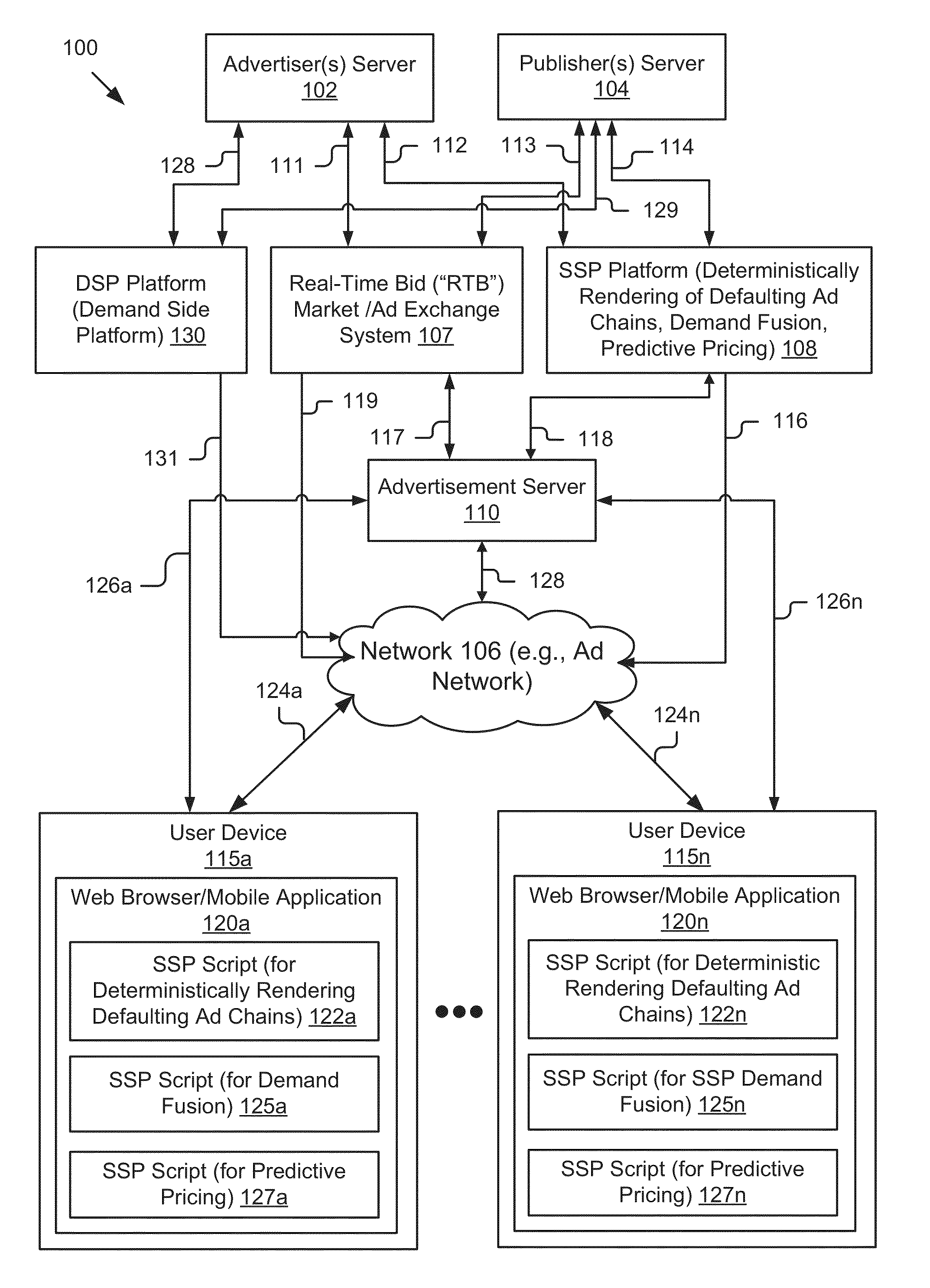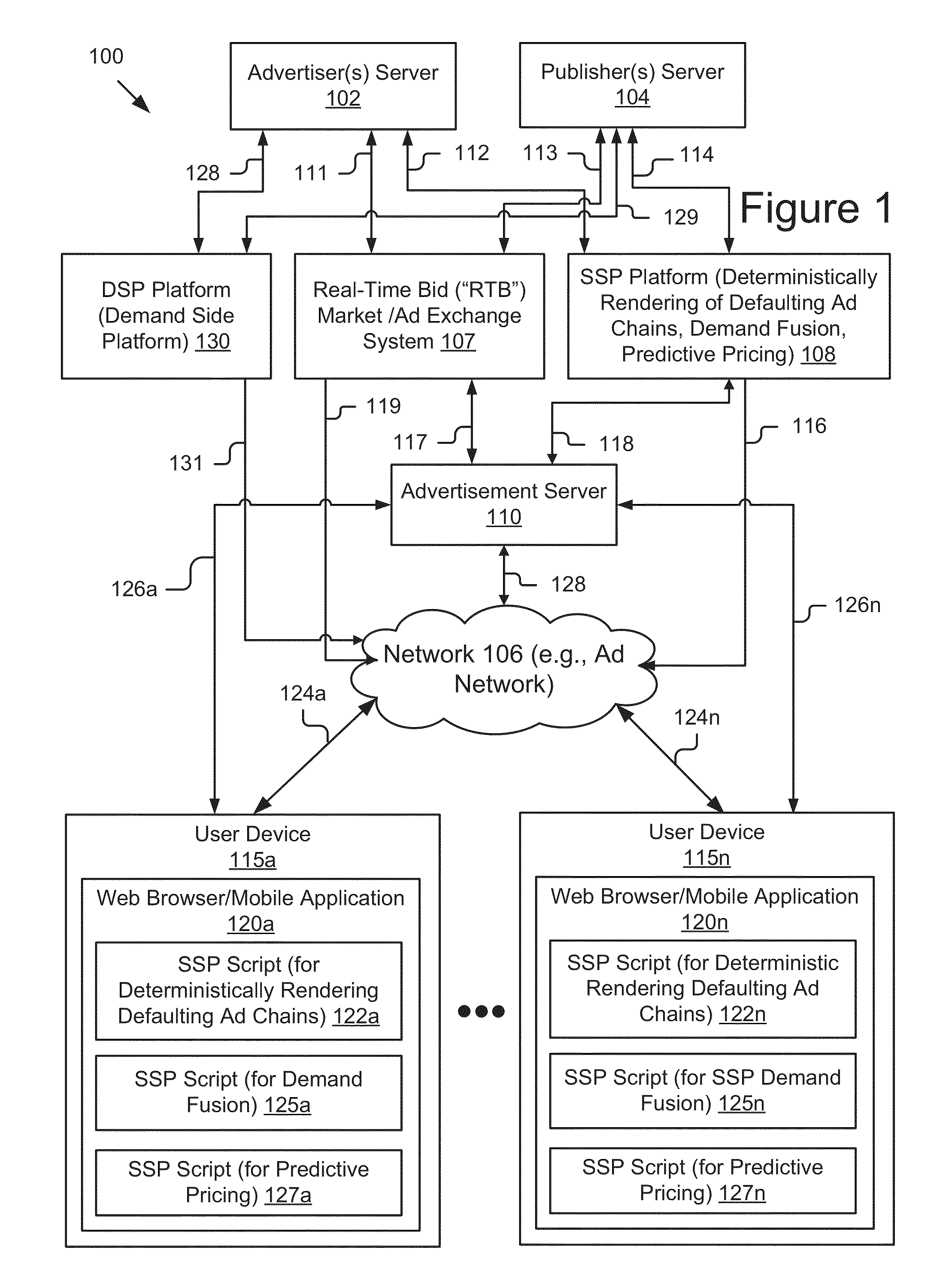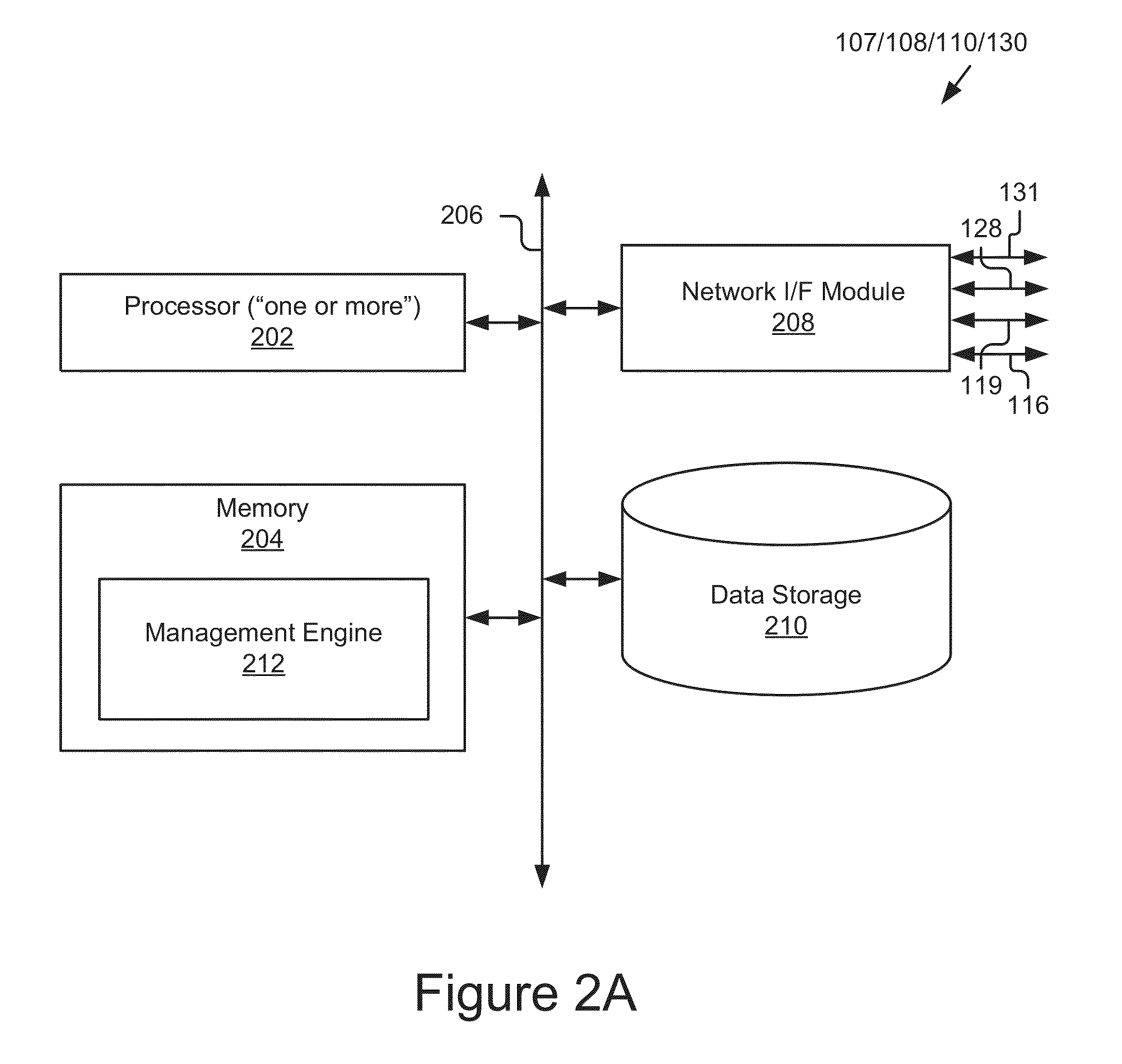Integrated Architecture for Performing Online Advertising Allocations
a technology of integrated architecture and online advertising, applied in the field of digital media display advertising, can solve the problems of not having access to advertisers, limited audience of potential advertisers that can be reached, and advertisers participating in that ad network may not accurately represent the overall market (specifically, the demand in the broader market) for the offered ad space, etc., and achieve the effect of generating more revenue for web publishers
- Summary
- Abstract
- Description
- Claims
- Application Information
AI Technical Summary
Benefits of technology
Problems solved by technology
Method used
Image
Examples
Embodiment Construction
[0067]An integrated architecture with system and methods that improve Supply-Side platform (“SSP”) technology with enhanced features is disclosed to enable publishers to manage their advertising impression inventory and maximize revenue from digital media. The Supply-side technology fuses real time bidding (“RTB”) and network demand to deliver significantly higher yield for publishers. Advantageously, this new approach solves fundamental issues that existed before. Specifically, by fusing Real-Time Bidding (RTB) and network demand into a single auction and by driving up price competition, the yield for publishers is significantly maximized.
[0068]The enhanced SSP platform provides mechanisms for deterministically rendering an advertisement chain in a user's web browser (or mobile application) in response to determining market demand. The term “deterministic” as used in this application implies that the impression for a given chain rendering process may be correctly and immediately im...
PUM
 Login to View More
Login to View More Abstract
Description
Claims
Application Information
 Login to View More
Login to View More - R&D
- Intellectual Property
- Life Sciences
- Materials
- Tech Scout
- Unparalleled Data Quality
- Higher Quality Content
- 60% Fewer Hallucinations
Browse by: Latest US Patents, China's latest patents, Technical Efficacy Thesaurus, Application Domain, Technology Topic, Popular Technical Reports.
© 2025 PatSnap. All rights reserved.Legal|Privacy policy|Modern Slavery Act Transparency Statement|Sitemap|About US| Contact US: help@patsnap.com



